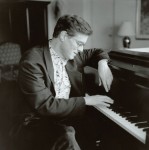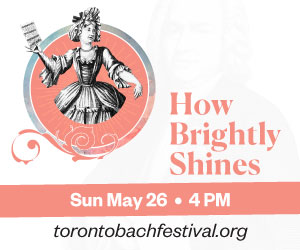 In his introduction to the third concert of the Toronto Summer Music Festival last night, artistic director Douglas McNabney noted that the program the audience was about to hear had nothing in it related to the festival’s theme “The Modern Age,” but that he just couldn’t pass up the opportunity to program the two signature piano quintets of the 19th century. It became clear once pianist Peter Serkin and the Orion String Quartet began to play Brahms Piano Quintet in F Minor, Op.34, however, that the rearview mirror of history was at work, setting a context for what would come in the century that followed.
In his introduction to the third concert of the Toronto Summer Music Festival last night, artistic director Douglas McNabney noted that the program the audience was about to hear had nothing in it related to the festival’s theme “The Modern Age,” but that he just couldn’t pass up the opportunity to program the two signature piano quintets of the 19th century. It became clear once pianist Peter Serkin and the Orion String Quartet began to play Brahms Piano Quintet in F Minor, Op.34, however, that the rearview mirror of history was at work, setting a context for what would come in the century that followed.
The intense piano opening thrust the Brahms on its way, expressing its echt romanticism and moving through a prolonged typical development section that contrasted string turbulence with pianistic lyricism. A ruminatively melodic extensive string passage, beautifully understated, set up a recapitulation of the opening theme before the gorgeous romanticism of the second movement took over.
It was here that hindsight opened our ears to the impending fragmentation of modernity as Brahms’ melody took its tentative steps to break out, the notes melting together, not quite able to transmute into Dali’s persistence of memory.
The joyful and triumphal third movement brought to mind the composer’s Double Concerto for Violin, Cello and Orchestra written more than two decades later, while the impeccably performed finale spotlighted the orchestral Brahms. It was a masterclass in chamber music performance.
The evening began with the Orion playing Haydn’s String Quartet in D Major, Op.76, No.5. Its pristine, stately opening notes were followed by a cheery energy leading into the beauty of the second movement’s “Largo Cantibile e mesto” -- like a tear falling in slow motion, understated and moving. The sprightly third movement was given a hint of mystery by the quartet, whose keen sense of ensemble and balance remained intact throughout the entire work.
With his thoughtful command of centuries of solo repertoire, an unwavering commitment to contemporary composers and a deeply ingrained engagement with chamber music, is there a better all-round pianist than Peter Serkin? Consider how he subsumed himself in the Brahms where the piano was an equal member of a group, yet in Dvořák’s Piano Quintet No.2 in A Major, where the keyboard is more of a solo instrument, he naturally played a more prominent role. In each case, serving the music was the raison d’être.
The Dvořák, with its lovely folk-like tunes running through its opening movement, the plaintive theme of the melodically plush second movement “Dumka” and the playful frolic of the finale, was airier, more open-ended than the Brahms.
All told it made for a memorable summer evening in Koerner Hall.



